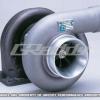Python Car Alarm
Announcements
-
Similar Content
-
Latest Posts
-
Yes. Get rid of that battery. It is dead. It will cause problems.
-
Don't assume too much when there is a voltage issue....if the battery is flat and the alternator not charging it is easy for the voltage to drop way low at the ECU due to the draw of stuff like coils, fuel pump etc Whatever you see at the battery with the motor off, it should be at least 13.8 with it running
-
I have been wondering if this is as simple as a voltage issue with the battery. Even on a charger, I can’t seem to get it over 11.8V on the terminals. Unless the alternator has failed as well, that wouldn’t cause it to die in the middle of driving though.
-
I’ll give this a shot next time I’m able to wrench on it. I was able to get my hands on a Haltech Nexus, so that should help with some of the more bizarre troubleshooting. Make sure the CAS is actually sending signal and will be able to set the proper dwell on the R35 coils. I’ve checked power/grounds/signals at the CAS, ignitor, and plugs and it was all there. Granted this was static with ignition on, not cranking. I also plan on swapping out the fuel filter and throwing on a fuel pressure gauge at the rail just to confirm I’m getting the correct pressure at the rail. 43psi if I recall correctly.
-
The attached document is fine. I just downloaded & opened it.
-






Recommended Posts
Create an account or sign in to comment
You need to be a member in order to leave a comment
Create an account
Sign up for a new account in our community. It's easy!
Register a new accountSign in
Already have an account? Sign in here.
Sign In Now